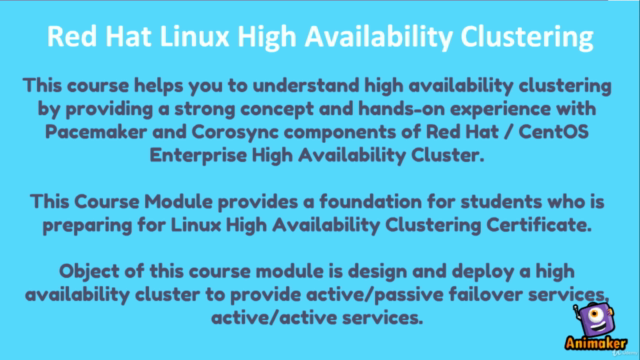Linux High Availability Clustering
Design and deploy a high availability cluster to provide active/passive or active/active services using HA Pacemaker
4.46 (1221 reviews)

7,073
students
6.5 hours
content
Aug 2024
last update
$59.99
regular price
What you will learn
Students should understand HA cluster concepts and how to manage different nodes, start/stop services
Creating High-Availability Clusters
Managing Cluster Nodes and Quorum
Managing Fencing
Creating and Configuring Resources
Managing Constraints
About Order, Location & Colocation Constraints
Troubleshooting High-Availability Clusters
Controlling Complex Resource groups
Managing Two Node Clusters
Concept about Split Brain, Fence death/fence racing
Managing iSCSI Initiators
Configuring & Managing High-Availability Logical Volumes
Managing Clustered Logical Volumes
GFS2 Concepts
Creating a GFS2 formatted Cluster File Systems
Growing & Repairing a GFS2 File System
Screenshots




Related Topics
2308228
udemy ID
4/5/2019
course created date
11/21/2019
course indexed date
Bot
course submited by